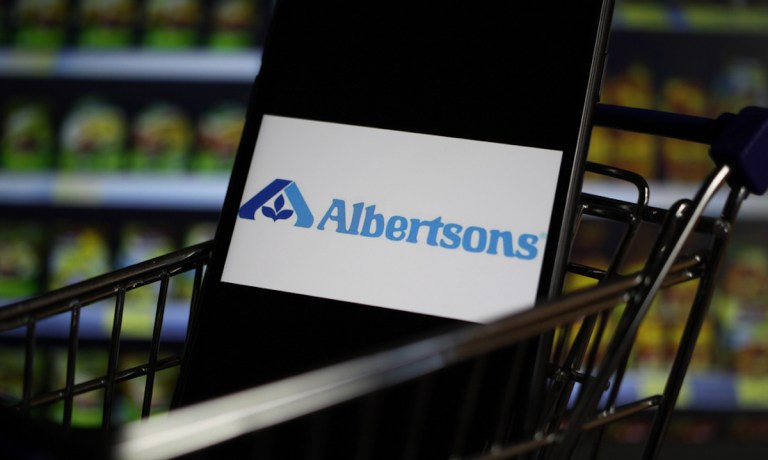Albertsons CEO: Our Greatest eCommerce Asset Is The Physical Store

As grocery businesses reckon with the tricky relationship between brick-and-mortar and digital channels, Albertsons Companies, parent of 21 grocery brands including its self-titled chain, Safeway, Jewel-Osco and Vons, is centering the physical store. The company announced on Thursday (July 29) that eCommerce sales remained roughly flat in its first quarter of 2021, though transactions increased, with basket sizes falling from early pandemic stockpiling highs.
“Our greatest asset is the store,” the company’s CEO Vivek Sankaran told analysts on a call. “Full stop. We are like ducks paddling pretty hard every day … to run great stores … When you have that, it gives you a great base to build an eCommerce business, and our eCommerce business is built on those stores.”
Specifically, Sankaran pointed to store cleanliness, product freshness, inventory variety, quality of service and labor management as priorities to make the store experience attractive to shoppers. While he believes that “there is room for MFCs [micro-fulfillment centers] and MFC growth,” the bulk of the company’s eCommerce upgrades over the past quarter have been tied to the physical store. The company grew its DriveUp & Go curbside pickup availability by almost a quarter, adding 320 locations to bring the total count of stores offering this option to 1,740.
As far as MFCs — small, automated warehouses that offer grocers the ability to fulfill eCommerce orders without interrupting in-store operations and without all the capex typically associated with opening a new warehouse — the company’s efforts have, to this point, also remained largely tied to the physical store.
“Part of the trick to the MFC is first learning how to operate it and connect it to what’s happening in the store,” said Sankaran. “Recognize that what you’re trying to do is to pick as much as you can from the MFC, and then pick the tail from the store so that you don’t lose the specialness of what you can get the customer from a store.”
He added that high-consideration items, such as floral arrangements and cuts of meat, remain tied to the physical store, while it is more straightforward to fulfill eCommerce orders for center store items. Sankaran noted that Albertsons‘ two existing MFCs are connected to stores, while a forthcoming facility will not be connected to any one physical location. The company is also looking into the possibility of opening a fully dark store.
“I think we’ve had enough to have learned a few prototypes that we can start scaling quickly,” said Sankaran. “There’s no need to punch out 100 of these quickly, because the business is still growing with the base of the store, and by the time it gets to a sufficient scale, we’ll have this figured out.”
Over the quarter, membership in the company’s digital coupons and rewards program grew 18 percent to almost 27 million, and the number of households actively engaged in its loyalty program grew 13 percent. Overall, identical sales were down 10 percent year over year for the quarter ending June 19, 2021 compared to the grocery shopping surge of the early months of quarantine, but remained up 17 percent from 2019 levels.
“It’s clear to us that [people are] eating a lot more at home,” said Sankaran, adding that the continuation of remote work and consumers’ increased comfort with cooking leads him to believe that shoppers’ turn toward food at home “will continue into the future.”
Read More On Grocery:
- Shop Talk: Grubhub’s Grocery VP Says ‘We’ll Catch Up Very Quickly’
- Save A Lot VP: Consumers Cross-Shop to Stretch Grocery Budgets
- Ocado Sees Consumers’ Embrace of Online Grocery Return
- Walmart Taps Automation in Bid to Broaden Grocery Lead Over Amazon